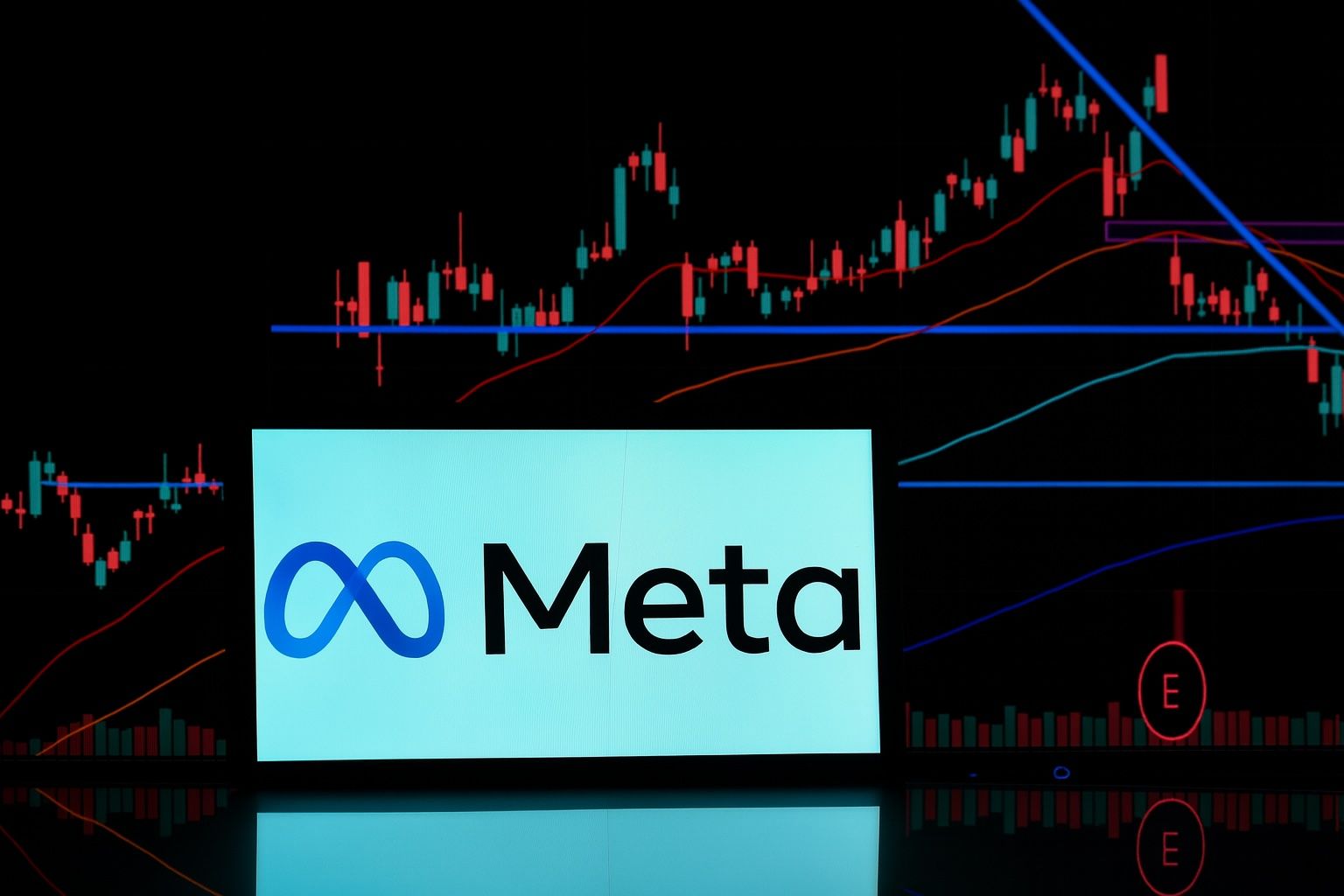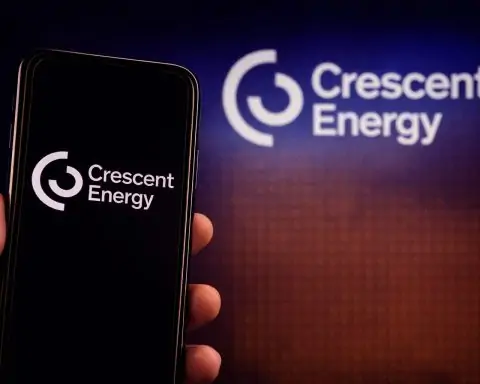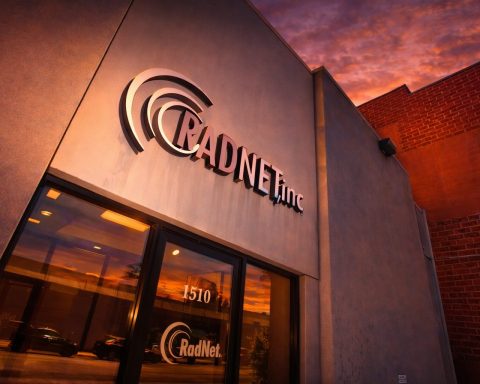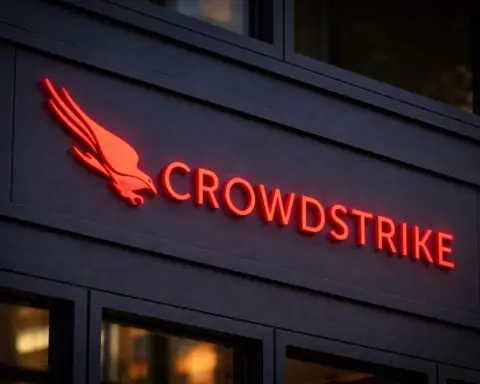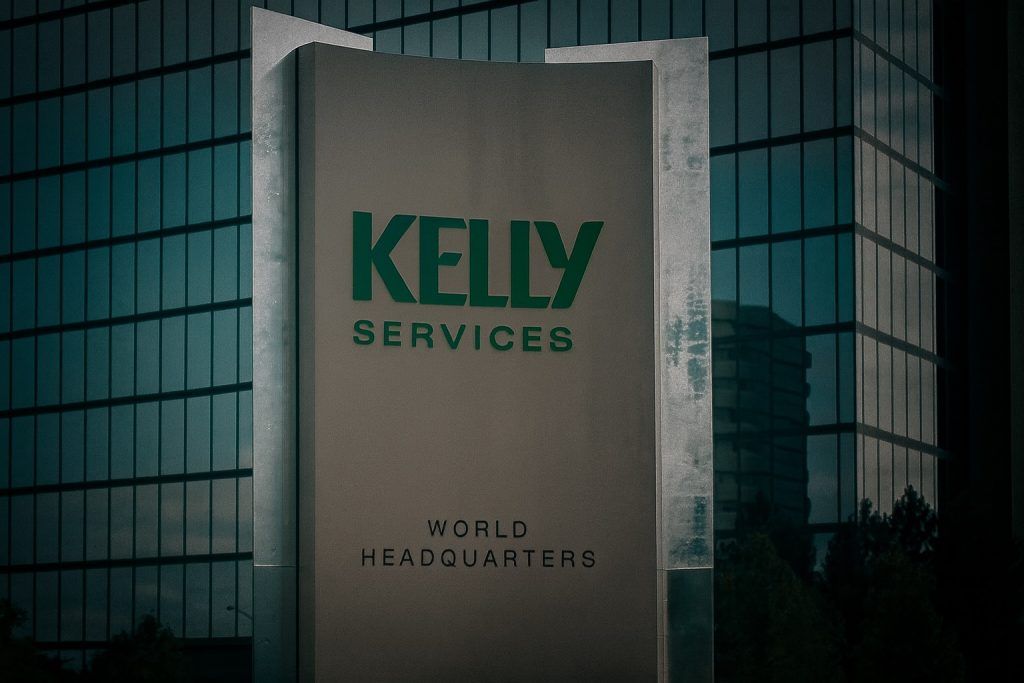- Meta poaches AI expert: Facebook/Meta (NASDAQ: META) has hired Andrew Tulloch – co-founder of Thinking Machines Lab – to boost its AI research team. Tulloch reportedly received an offer worth up to $1.5 billion over six years, including hefty bonuses and stock incentives [1] [2].
- Zuckerberg’s aggressive bid: Meta’s CEO Mark Zuckerberg has not only pursued acquisitions but directly courted dozens of AI engineers. After Thinking Machines’ founder Mira Murati refused to sell, Meta approached “more than a dozen” of her startup’s key engineers (including Tulloch) [3] [4]. OpenAI’s CEO Sam Altman even noted that Meta offered some researchers $100 million bonuses to join [5].
- META stock rally: The news comes as Meta’s stock has surged in 2025. Shares hit an all-time high around $789 in August (a 53% gain YTD) [6] and were near ~$734 by late September [7]. Wall Street remains bullish: analysts’ 12-month price targets average ~$850 (median) [8] and some see upside past $1,000 [9]. (Forbes recently noted Meta’s “bull run seems likely to bring it over the $800 mark” [10].)
- Reality Labs drag: Investors are watching Meta’s AI/VR spending closely. Its “Reality Labs” AR/VR division lost about $3.7 billion in Q2 [11], a heavy drag even as AI-driven ad revenue booms. Meta continues pouring billions into AI chips (e.g. acquiring Rivos) and hiring top talent to sustain growth [12] [13].
- Apple shifts focus: In contrast, Apple (NASDAQ: AAPL) has paused further Vision Pro VR headset upgrades to pour resources into affordable AI smart glasses [14]. Apple’s Vision Pro (launched Feb. 2024) has underwhelmed against cheaper rivals, prompting this strategic pivot [15]. Meta already dominates the extended reality market (owning ~60.6% of AR/VR+glasses sales in Q2 2025) [16].
- AAPL stock lukewarm: Apple’s stock is roughly flat for 2025 (trading around $220–$230 range). It rebounded from an early-year dip of 15% to about $224 in August [17]. Analysts’ consensus 2025 target is only ~$233 [18], reflecting modest growth expectations. (Some model-driven forecasts extend to the $360 range for 2026 [19].)
- Bull vs. Bear factors: Experts say Meta’s future hinges on keeping its AI momentum (ads and engagement) while controlling costs, whereas Apple must prove its AI/AR bets can offset slower hardware cycles. Apple trades at a forward P/E ~27, so its lofty valuation depends on delivering on AI/AR promises [20]. Both companies face regulatory and competitive risks, but many analysts conclude both Meta and Alphabet (Google) are poised for continued growth in AI, each appealing to different investor styles [21].
Meta’s AI Talent Offensive
Meta is doubling down on the AI arms race by snapping up top researchers. This month the company confirmed that Andrew Tulloch, the machine-learning specialist who co-founded Mira Murati’s AI startup Thinking Machines Lab, will join Meta [22]. A spokesperson said Tulloch “decided to pursue a different path,” and media reports say Zuckerberg personally courted him with a massive package. According to the Wall Street Journal and Calcalist, Tulloch’s compensation could reach $1.5 billion over several years through a combination of salary, bonuses and stock [23] [24]. (Meta has declined to comment on the exact figure.)
This hire follows Zuckerberg’s earlier, well-publicized overtures to Thinking Machines. When founder Murati rebuffed a direct acquisition offer, Zuckerberg reportedly approached at least a dozen of her engineers to jump ship to Meta [25] [26]. Tulloch himself had already worked at Meta and OpenAI before co-founding Thinking Machines with Murati (OpenAI’s former CTO). Reuters notes that Zuckerberg’s recruiting campaign “was a pretty open secret,” and OpenAI CEO Sam Altman has confirmed that Meta even dangled $100 million bonuses to tempt senior researchers [27]. Tech analysts say Meta’s new unit (dubbed “TBD Labs”, led by AI chief Alexandr Wang) will use Tulloch’s expertise to strengthen its generative AI and supercomputing efforts [28] [29]. Murati’s startup was last valued at about $12 billion (Series A), so losing its co-founder underlines how fierce the war for talent has become [30] [31].
Meta’s talent raid is emblematic of a broader strategy: the company has spent billions on AI since last year. In June 2025 it invested $14.3B for half of Scale AI (to bring founder Alexandr Wang in-house), and it has struck startup deals (like chip-maker Rivos) and big packages to populate its AI labs [32] [33]. These moves follow a disappointing debut of Meta’s Llama 4 model and lagging R&D output, prompting Zuckerberg to use the company’s deep pockets to catch up. As the Axios tech newsletter notes, Tulloch’s actual pay ended up smaller than some rumors, but the fact that Meta is still willing to spend at all on headhunts shows “Mark Zuckerberg isn’t done with nabbing big-name AI talent” [34].
META Stock Soars on AI Surge
Meta’s aggressive AI push is already reflecting in its stock performance. After a volatile 2022–2023, 2025 has seen META shares run up about 25% year-to-date. The stock hit an intraday high of roughly $789 on August 12, 2025 – the first all-time high since 2021 – before settling in the mid-$700s by fall [35]. Its year-to-date return is now around +25% [36], outperforming peers amid a digital ad rebound.
The key catalyst has been a strong Q2 earnings beat (mid-August 2025), when revenue grew 22% year-over-year to $47.5B [37]. Meta highlighted that AI-driven ad targeting boosted engagement and monetization, helping ad impressions rise 11% and average prices 9% in the quarter [38]. Its operating margin jumped to 43% as cost controls took hold [39]. In short, Meta has combined rising ad demand with disciplined spending on AI, yielding booming profits (EPS jumped ~38%). TradingNews reports that Meta generated about $18.3B net income in Q2, with trailing-12-month net profits of $71.5B (a 40% profit margin) [40]. Cash flow is strong too, and the company is buying back stock ($9.8B in Q2) and still paying a dividend [41].
Analysts and tech media are reacting positively. A TS2.Tech analysis notes that 44 analysts rate META a “Strong Buy”, with an average 12-month price target around $826 (median ~$850) [42]. High-end forecasts even approach $1,086 (and Barclays Bank’s recent target was $810, while Loop Capital has $980) [43]. In an investor note, Forbes wrote that Meta’s “bull run seems likely to bring it over the $800 mark,” powered by its robust revenue growth and AI momentum [44]. Axios reports that Wall Street’s consensus target is roughly $865 for META [45]. A few strategists are even setting targets above $900-$1,000, especially if Meta can sustain >20% profit growth [46] [47].
That said, risks remain. Meta’s Reality Labs (metaverse/VR) division continues to burn cash (about $3.7B loss in Q2 alone [48]). Any slowdown in ad demand or new regulation (e.g. EU data laws) could temper enthusiasm. Still, some analysts argue both sides: tech bulls say Zuckerberg has a track record of pivoting successfully (e.g. to mobile, to Reels) and has proven “investors who doubted us have been proven wrong before” [49]. In contrast, more cautious voices point out that the stock is not cheap – it trades around 26× forward earnings (vs. ~19–20× for Alphabet) [50] – and any hiccup in execution could cause a pullback.
Apple’s Vision Pro Pause and Stock Outlook
Meanwhile, Apple is taking a different path in the XR/AI arena. According to industry reports, Apple has shelved its planned Vision Pro overhaul (nicknamed “Vision Air” internally) and is reallocating resources toward developing lighter, AI-powered smart glasses [51]. The $3,499 Vision Pro headset (launched early 2024) has faced tepid demand and stiff price competition from Meta’s Quest line. Technology Magazine notes that Apple “has struggled to compete” with cheaper AR/VR devices, forcing a strategic pivot to glasses [52]. At Meta Connect 2025, Zuckerberg even underscored the shift by introducing Meta’s own Ray-Ban smart glasses and declaring that “glasses are the ideal form factor for personal superintelligence” [53]. In other words, Meta is betting big on AI eyewear, and Apple is racing to catch up with a less-isolated, more affordable design.
Apple’s stock performance has been muted in comparison. AInvest reports that after a first-half slide, Apple stock has just barely turned positive: it traded near $224 per share in August 2025, roughly flat from a year ago [54]. Year-to-date return is only about +2% [55], reflecting investor skepticism that Apple has lagged behind peers in AI. Analysts’ consensus targets for AAPL are modest: about $233 for end-2025 [56], with a few models stretching as high as $277 (2025 average) and $363 (2026 average) [57]. Apple’s forward P/E (~27×) implies high expectations – which depend on successful new products in AI and AR/VR [58].
That concern is echoed by market watchers. A Barchart analysis notes that Apple spent the summer touting AI features but delivered only incremental updates; critics say the company has an “AI gap” relative to rivals [59] [60]. In response, Apple’s leadership is signaling a ramp-up in AI investment. On its last earnings call, CEO Tim Cook revealed that Apple is increasing capex on AI, shifting more engineers to AI projects, and is even open to big acquisitions “to accelerate” its roadmap [61]. (Cook acknowledged he’s “not stuck on a certain size” deal, hinting that Apple might buy a next-gen AI start-up if it fits [62].) Industry insiders say Apple’s move into smart glasses and renewed AI push are designed to protect its massive ecosystem – but any misstep could weigh on the stock.
Market Forecasts and Expert Views
Overall, analysts see reason for cautious optimism. Meta and Apple (and Alphabet) are viewed as long-term winners in tech, each for different strengths [63]. For META, the near-term outlook is driven by ad growth and new AI services (e.g. charging for verification or ad-free options), with Q3 2025 guidance already strong (projecting ~+17–24% revenue growth [64]). TS2.Tech notes that even if Meta’s forward P/E compresses slightly, a base of 10–15% EPS growth (through 2026) could still push the stock higher [65]. And for GOOGL/Alphabet, the recent dismissal of a DOJ antitrust suit has removed a cloud, and analysts expect double-digit ad growth (especially from AI-enhanced search) to continue [66]. Alphabet’s stock trades at a cheaper multiple (around 19–20× forward) than Meta [67], so many investors see it as an attractive “value” play on AI.
Apple’s path is more nuanced. If Apple’s AI and AR efforts pay off (e.g. a popular new glasses product or AI features that boost services), analysts believe the current targets could prove conservative. But the risk of regulatory scrutiny (privacy, App Store issues) and hardware saturation remains. One fintech forecast observes that Apple’s recent rebound likely reflects short-term optimism, while real test lies in long-term execution of AI/AR and services innovation [68] [69].
In sum, the explosive competition for AI talent – epitomized by Zuckerberg’s $1.5B offers – is reshaping the tech landscape. Meta’s aggressive hiring binge and AI investments have already propelled its stock to new highs, while Apple is recalibrating its strategy around AI smart glasses. Investors will be watching how these moves translate into user growth, revenues and profits. As one TS2.Tech analyst put it, both Meta and Google have “huge opportunities” ahead: Meta’s focused ad-driven model might deliver faster growth, whereas Alphabet’s diversified base and AI potential make it compelling – “the debate often boils down to quality vs. valuation, but many say ‘why not both’,” meaning a balanced portfolio of these tech giants could be wise [70].
Sources: Latest reports from Reuters, The Wall Street Journal, Calcalist/CTech, Yahoo Finance, Axios and tech finance analyses (including TS2.Tech and Forbes) [71] [72] [73] [74]. Industry experts quoted include OpenAI’s Sam Altman and Mark Zuckerberg (via press reports) [75] [76]. All stock and forecast figures are drawn from financial news and analyst publications [77] [78] [79].
References
1. www.calcalistech.com, 2. www.reuters.com, 3. www.calcalistech.com, 4. www.reuters.com, 5. www.reuters.com, 6. ts2.tech, 7. ts2.tech, 8. ts2.tech, 9. ts2.tech, 10. ts2.tech, 11. ts2.tech, 12. ts2.tech, 13. ts2.tech, 14. technologymagazine.com, 15. technologymagazine.com, 16. technologymagazine.com, 17. www.ainvest.com, 18. www.ainvest.com, 19. www.ainvest.com, 20. www.ainvest.com, 21. ts2.tech, 22. www.reuters.com, 23. www.calcalistech.com, 24. www.reuters.com, 25. www.calcalistech.com, 26. www.reuters.com, 27. www.reuters.com, 28. www.axios.com, 29. www.reuters.com, 30. www.axios.com, 31. www.calcalistech.com, 32. www.calcalistech.com, 33. ts2.tech, 34. www.axios.com, 35. ts2.tech, 36. ts2.tech, 37. ts2.tech, 38. ts2.tech, 39. ts2.tech, 40. ts2.tech, 41. ts2.tech, 42. ts2.tech, 43. ts2.tech, 44. ts2.tech, 45. ts2.tech, 46. ts2.tech, 47. ts2.tech, 48. ts2.tech, 49. ts2.tech, 50. ts2.tech, 51. technologymagazine.com, 52. technologymagazine.com, 53. technologymagazine.com, 54. www.ainvest.com, 55. www.ainvest.com, 56. www.ainvest.com, 57. www.ainvest.com, 58. www.ainvest.com, 59. www.shawneefeed.com, 60. www.shawneefeed.com, 61. www.shawneefeed.com, 62. www.shawneefeed.com, 63. ts2.tech, 64. ts2.tech, 65. ts2.tech, 66. ts2.tech, 67. ts2.tech, 68. www.ainvest.com, 69. www.ainvest.com, 70. ts2.tech, 71. www.reuters.com, 72. www.calcalistech.com, 73. ts2.tech, 74. www.ainvest.com, 75. www.reuters.com, 76. technologymagazine.com, 77. ts2.tech, 78. ts2.tech, 79. www.ainvest.com
